Abstract
About ten years ago I discovered an interesting way to construct a tetrahedral shape by sliding together four rectangular planes in a certain way. By using halfway cuts in the planes it was possible to slide them together, all at once, to become the enclosed tetrahedron. This way of constructing objects and structures, finite and infinite, has been of my interest from then on. In this paper I will give an insight into some of the results of my research in this field. Besides halfway cuts I examined some other ways of slide-together structures.
1. Introduction
1.1. "Slide-together". At Bridges 2004 George Hart presented his "slide-togethers": polyhedral constructions built with simple flat paper elements, which were slid together [1]. Each "slide-together" was made from identical copies of a single type of regular polygon with slits cut at the proper locations. The pieces in these constructions had to be bent during the assembly. In my search I tried to focus on structures that can be built with rigid elements. So in most cases sliding the pieces together to form the final structure is possible without bending the pieces.
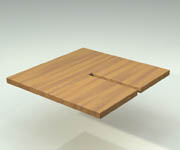
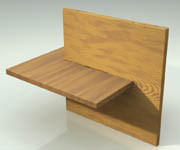
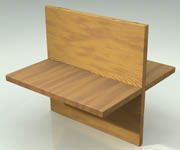
Figure 1a,b,c: Basic principle - halfway cut
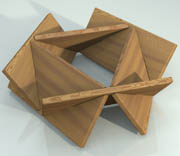
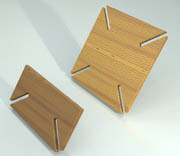

Figure 2a:
Ring - 6 basic pieces
Ring - 6 basic pieces
Figure 2b:
Basic and double piece
Basic and double piece
Figure 3: 3D structure